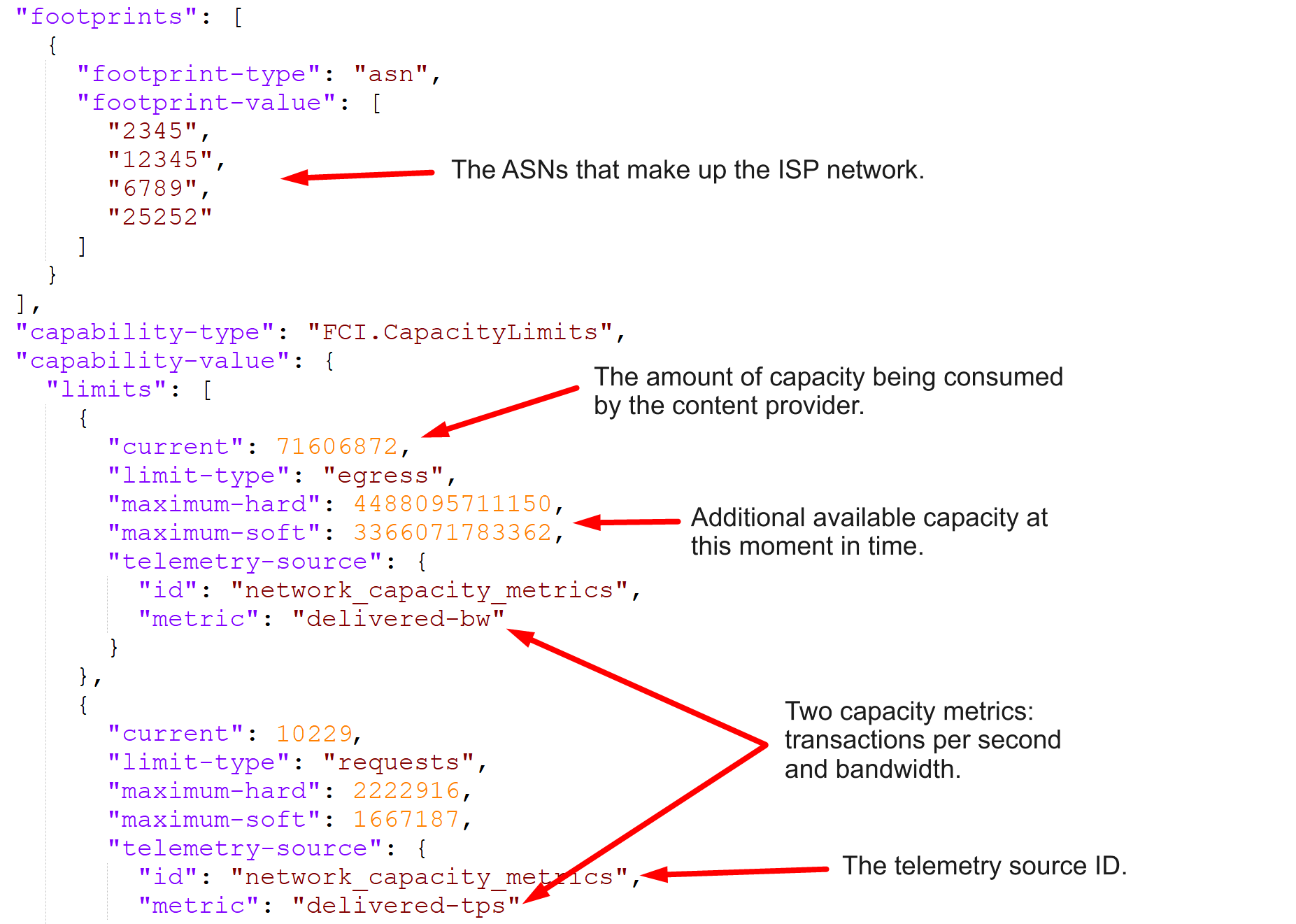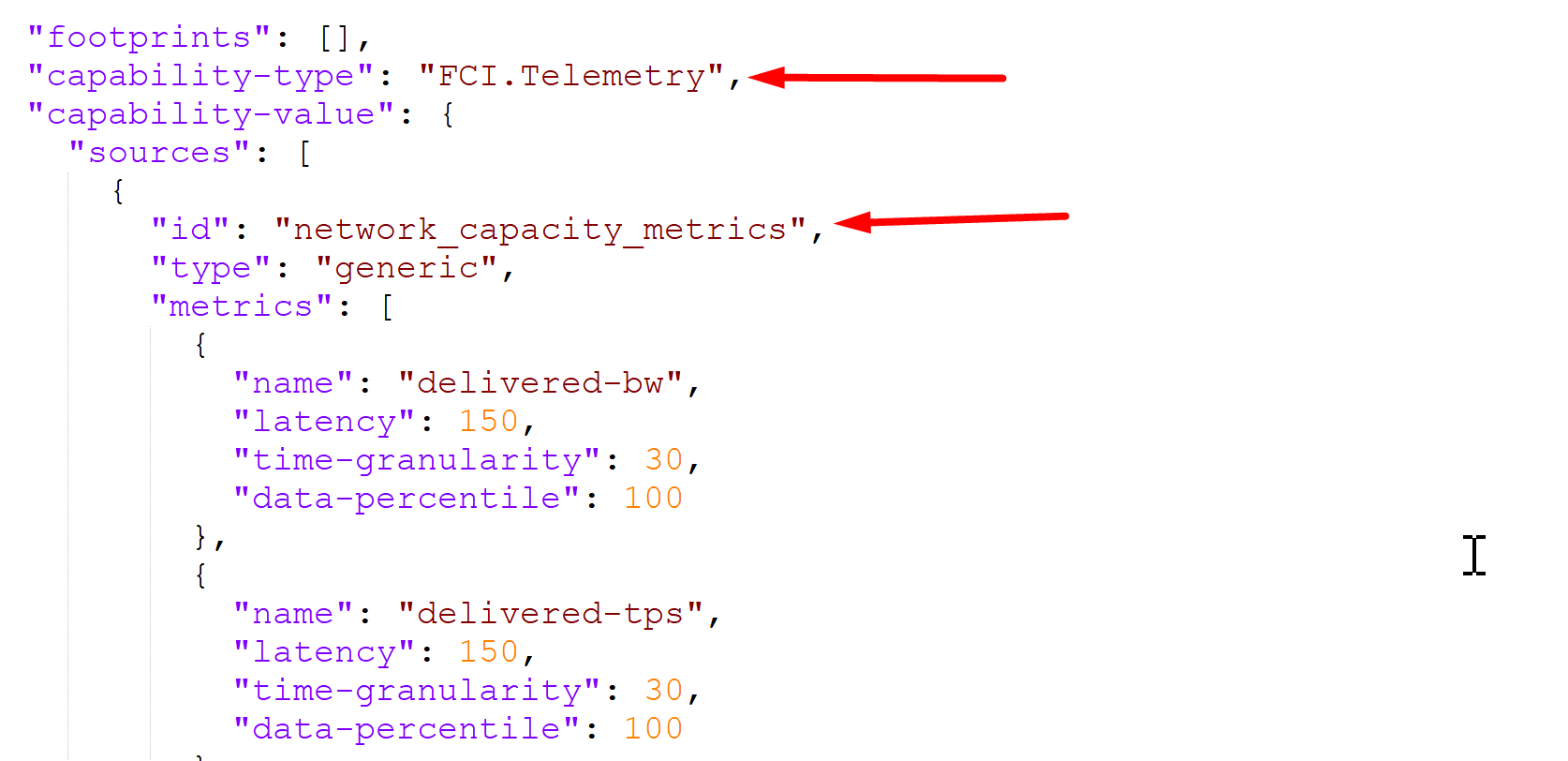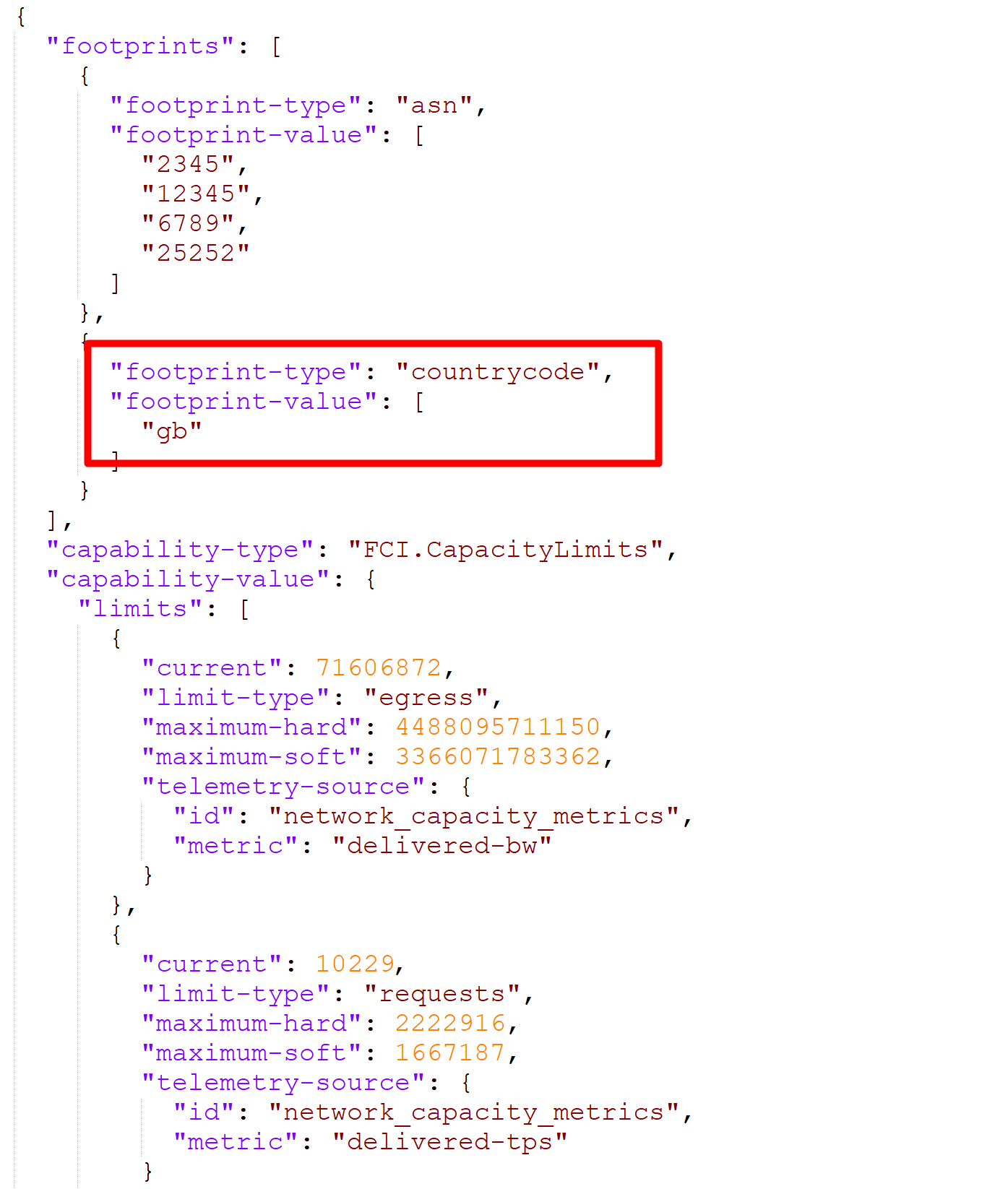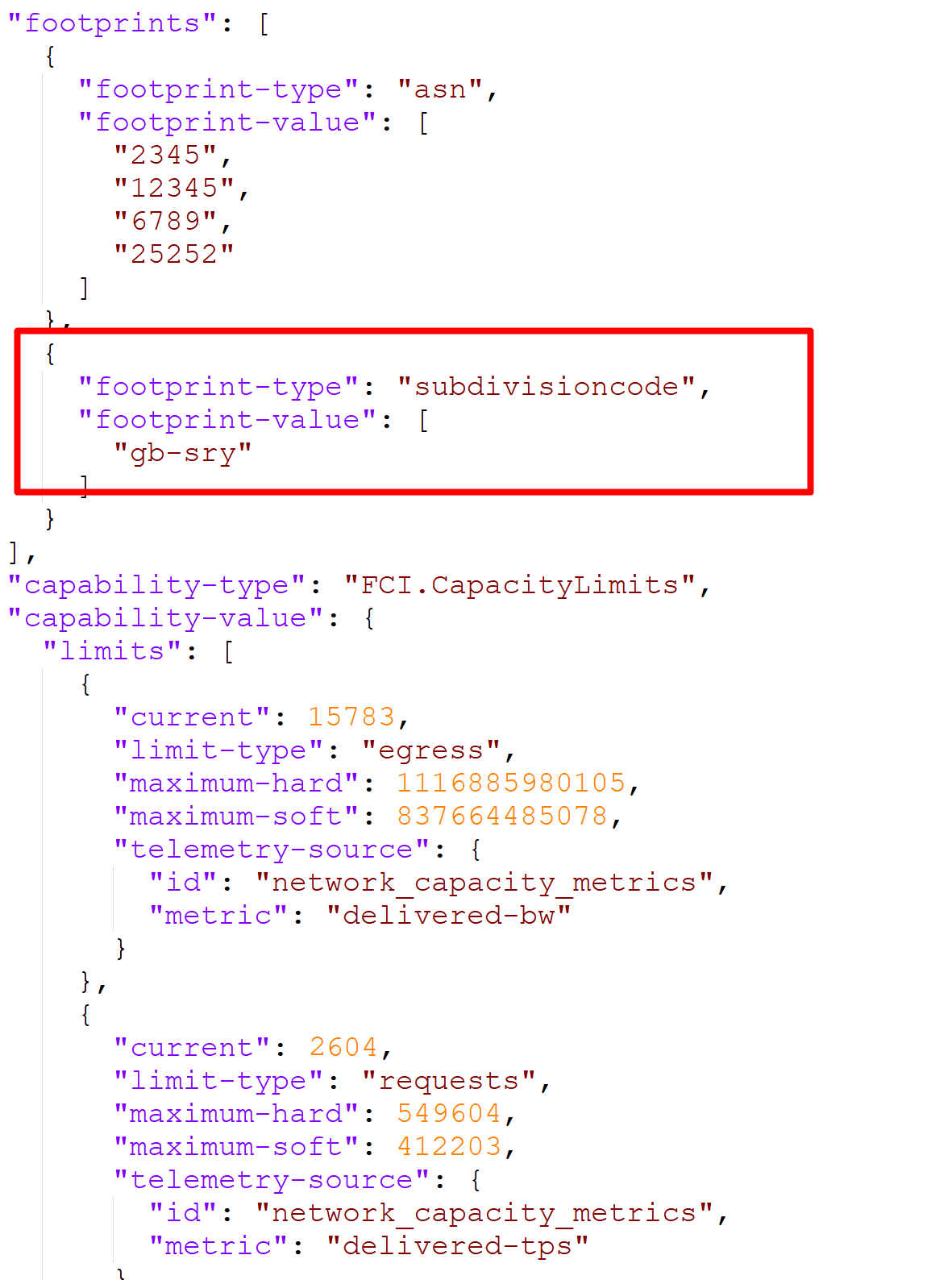Footprint Capabilities Interface (FCI) API
The FCI API provides real-time information about how much capacity is available on the Qwilt CDN within ISP networks and the Qwilt Global points of presence (POPs). It also provides real-time information about how much capacity you (the content publisher) are currently using. Data is available per ISP, and per country and subdivision (e.g. state, province, or region) within the ISP.
The FCI API shifts the approach from delegating traffic based on a general understanding of each CDN's capacity in a network, to load balancing based on up-to-the minute knowledge of current capacity.
Please be aware that the API response does not account for capacity reservations.
How does it work?
A simple API call retrieves real-time data about available Qwilt CDN capacity. The response includes information about the Qwilt footprint for all the networks where the CP is authorized to serve traffic and for all the (ISO3166-1 alpha-2) countries and (ISO3166-2) subdivisions within each network. The CP can then parse the response for information about Qwilt availability in a specific ISP network, or for a particular country or subdivision within an ISP network.
For example, in the event of an unexpected spike in traffic during a live event, you can use the API to quickly find available capacity within the Qwilt CDN in the specific locations where additional capacity is needed to effectively handle your traffic.
In line with the current SVTA standards, for consistency across CDNs, there is currently no ability to add query parameters to the request.
Authentication
Two authentication methods are supported for interacting with the Qwilt APIs:
- API key based authentication
- Token based authentication
Output Format
The API response format includes an array of “footprints” objects. A footprint object is returned per network in which the CP is authorized to serve traffic and per country and subdivision within the network in which Qwilt caches are physically deployed. Each object exposes the capacity data for a particular ASN group (ISP), or for a country or subdivision within the ISP.
Capacity advertisements are advisory and do not represent a commitment or reservation. Available capacity is dynamic and fluctuates as traffic fluctuates. So it is important to note that the available capacity values are accurate for a specific moment in time.
If you require capacity reservation, please contact your account manager or email support@qwilt.com.
Examples
Note the bit per second (bps) values in the examples. We subtract a calculated percentage of available capacity from the published available capacity values as a buffer to ensure that the published availability is reliable.
ISP Footprint: Available Capacity within an ISP
The “CapacityLimits” in the “asn” footprint type are relevant to the ISP network as a whole. The ASNs that make up the ISP network are listed in the “footprint-value” field.

The capacity data indicates the following:
- current: The amount of capacity that is being used by the content provider at this moment in time.
- limit-type: Indicates the capacity metric, egress (bandwidth measured in bits per second), or requests (transactions per second). Learn how Qwilt calculates Bandwidth and TPS.
- maximum-hard: The maximum additional available capacity at this moment in time.
- maximum-soft: A safe availability threshold, typically 75% of the maximum-hard value.
- telemetry-source: Identifies the telemetry source and metric. The “id” value links the object to the last object of the JSON response, the “FCI.Telemetry” footprints object that provides additional metadata about how capacity was measured.

Country Footprint: Available Capacity within an ISP, in a Particular Country
The following “footprints” element exposes the “CapacityLimits” for a particular “country” (gb) within the ISP. (In other words, the footprint element belongs to the same ISP, but the capacity data is what’s available for that particular country within the ISP.)

Subdivision Footprint: Available Capacity within an ISP, in a Particular Area
The following “footprints” element exposes the “CapacityLimits” for a particular “subdivision” within the ISP. In this example "gb-sry" is the ISO3166-2 code for Surrey, a county in Great Britain.
